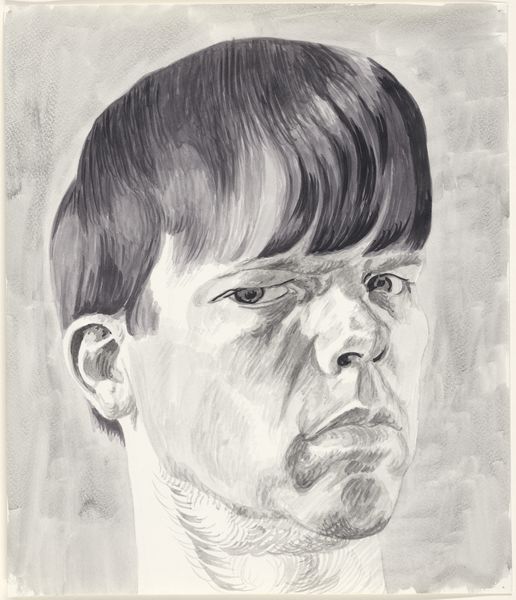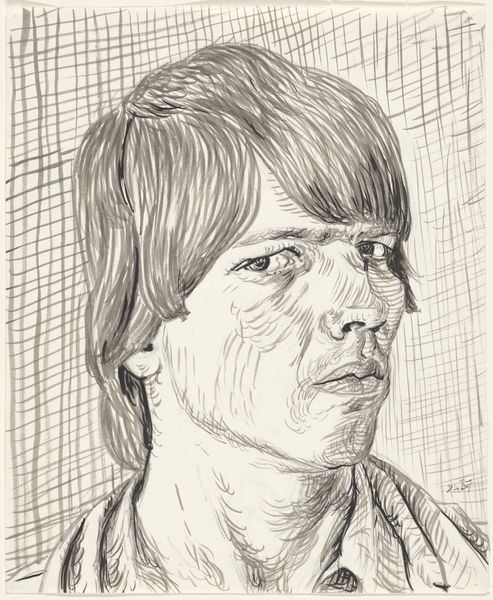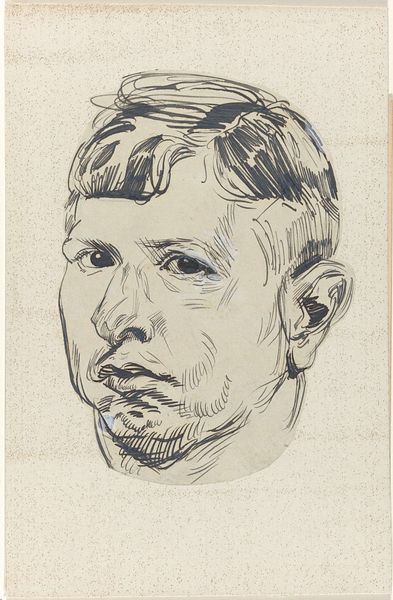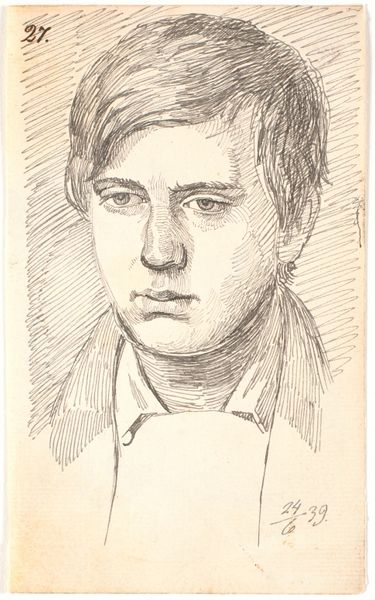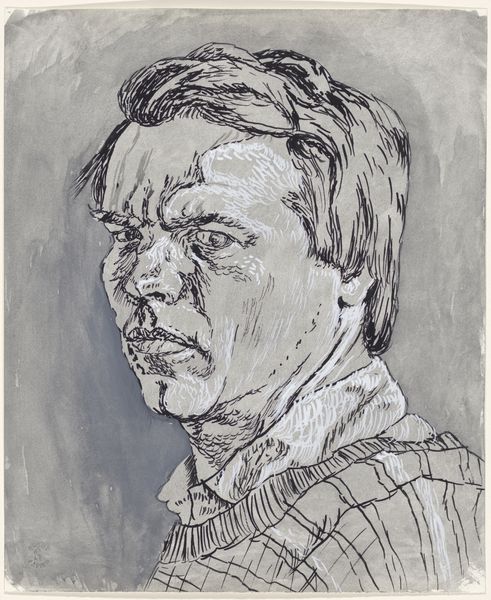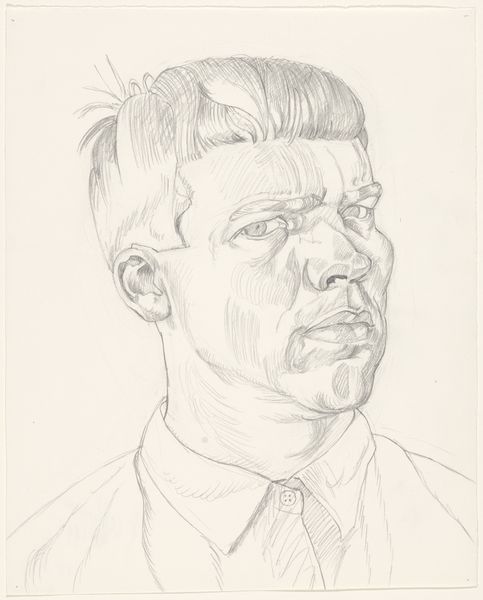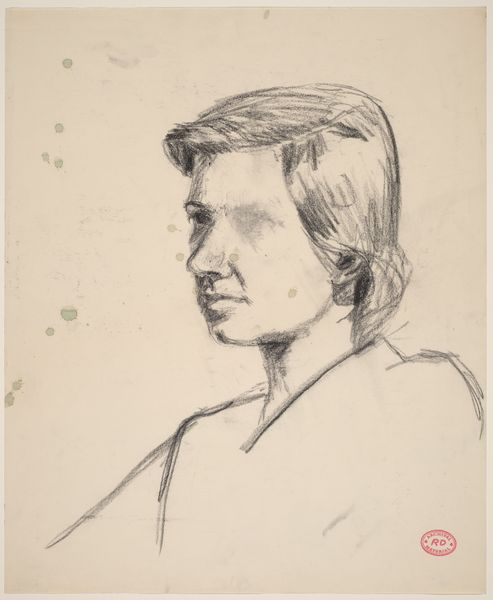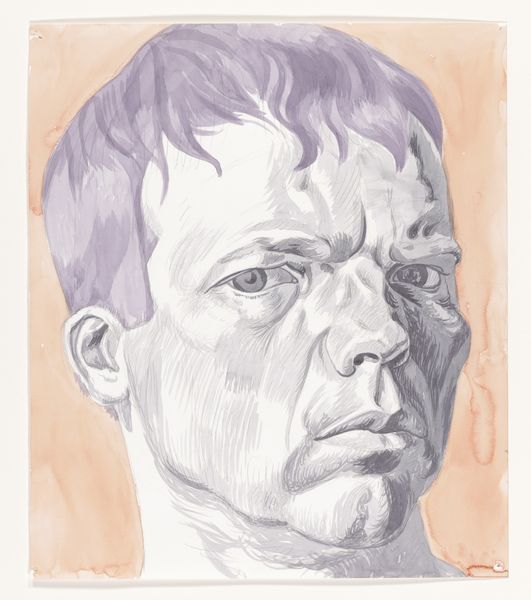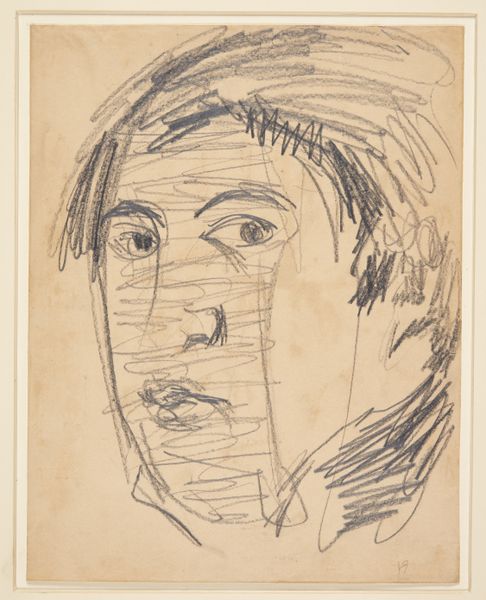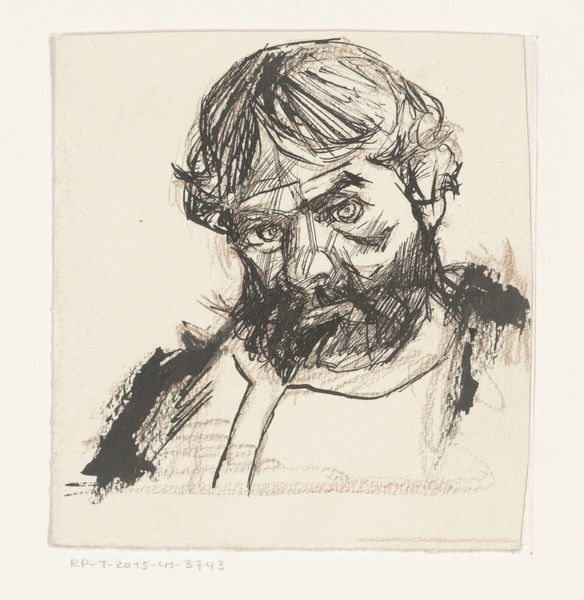
drawing, pencil, graphite
#
portrait
#
drawing
#
facial expression drawing
#
self-portrait
#
pencil sketch
#
caricature
#
portrait reference
#
pencil
#
graphite
#
animal drawing portrait
#
portrait drawing
#
facial portrait
#
portrait art
#
fine art portrait
#
realism
#
digital portrait
Dimensions: height 300 mm, width 215 mm
Copyright: Rijks Museum: Open Domain
Curator: We are looking at "Self-Portrait 1986 No. 142" by Philip Akkerman, rendered in pencil on paper. Editor: Intense! That's the first word that jumps to mind. It’s as if the sitter, who is also the artist here, is daring you to look away, you know? Curator: Akkerman is known for producing a vast number of self-portraits, almost obsessively, and within the tradition of art history that focuses on artists examining themselves and their identity through relentless scrutiny. Editor: Right. But this one, unlike some self-portraits which can feel kind of melancholic or self-aggrandizing, is almost…challenging? Like, “Here I am, deal with it.” And the pencil strokes feel urgent, scratchy. It’s not a flattering portrait by any means. Curator: His dedication to the self-portrait as a genre provides insight into the broader scope of art as an endless project for artists of that time, probing identity and questioning the validity of portraiture within increasingly image-saturated environments. Akkerman pursued an almost scientific analysis of his own face. Editor: Which, let’s be honest, is both fascinating and a bit unnerving. It’s not just looking, it's *staring*, picking apart every little detail, line, wrinkle. But you see it also feels like an act of reclamation. Taking ownership of his image. Curator: There’s certainly a raw honesty to it that’s hard to ignore. We are accustomed to seeing polished or carefully constructed images and identities—the fact that the artist has recorded so many aspects in simple graphite almost strips away artifice. Editor: Exactly. The sketchiness kind of humanizes the portrait, or deconstructs it, bit by bit. It’s more than a face; it’s the *idea* of a face, constantly being redefined with each stroke. You know, the imperfections become perfections. Curator: I agree that Akkerman confronts ideas of identity by simply and unceasingly reproducing himself, showing the instability that inevitably occurs when rendering such a subject multiple times, despite ostensibly being the same one. Editor: So it starts to be less about this guy Philip Akkerman and more about what all faces hold—mystery, possibility, a challenge! It makes you look at your own reflection a little differently. Curator: I would say that, ultimately, it challenges viewers to rethink art and identity by placing scrutiny and endless visual assessment center stage, prompting examination of how institutions of image and power inform the public face of individuals. Editor: Well, now, I'm starting to see Akkerman's image not as a mere picture of a man's face from a certain time, but like looking into a mirror myself, to remind us of our vulnerabilities, or maybe what strengths may appear from the same cracks, time and again.
Comments
No comments
Be the first to comment and join the conversation on the ultimate creative platform.
